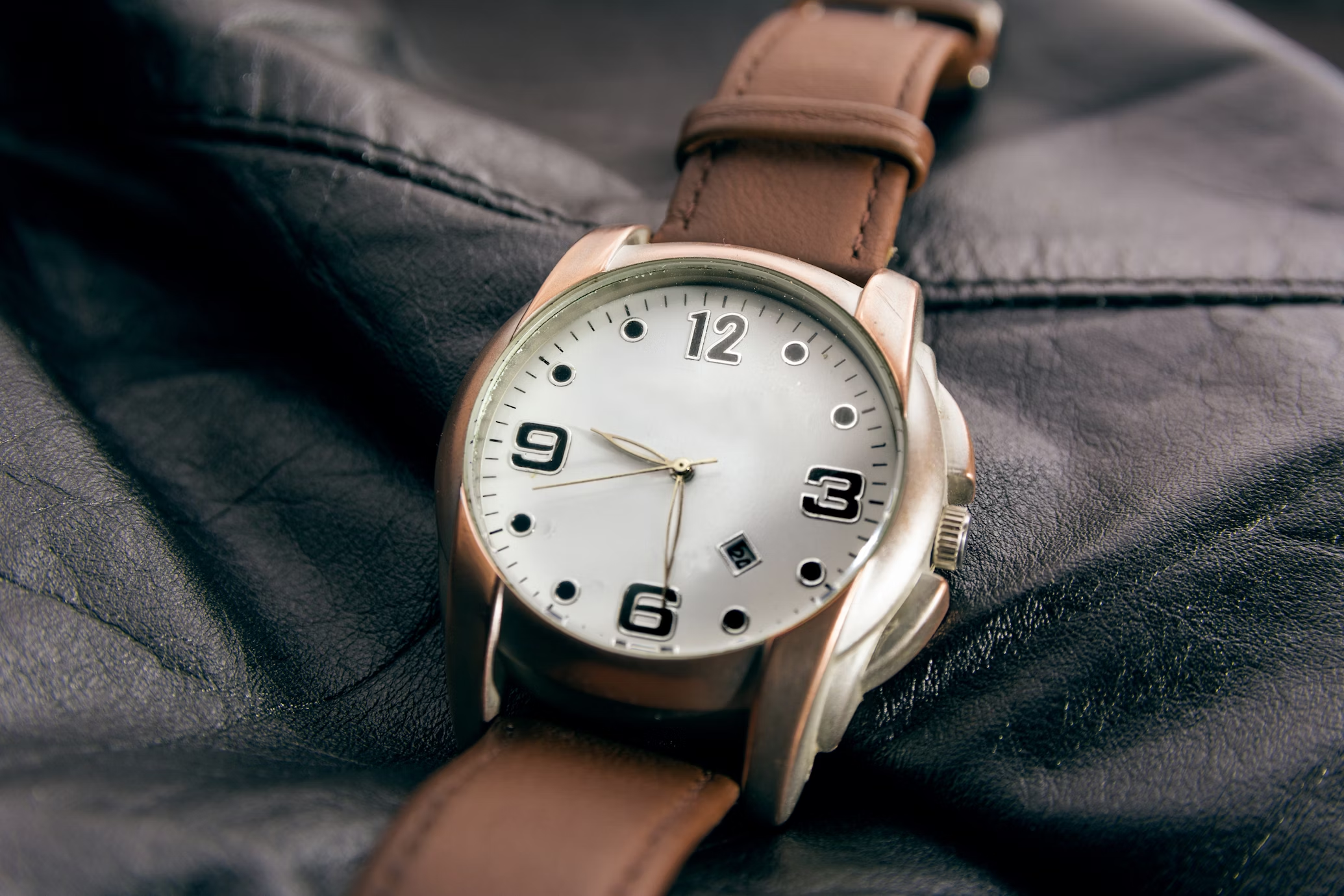If you are a watch enthusiast, you might have come across the term "power reserve" when reading about automatic watches. Power reserve is an essential feature of automatic watches that determines how long they can run without being wound. The power reserve indicates the amount of time a watch can run after being fully wound.
Automatic watches are also known as self-winding watches. They use the natural motion of the wearer's wrist to wind the mainspring, which powers the watch. As long as the watch is worn regularly, the mainspring remains wound, and the watch runs accurately. However, when the watch is not worn for an extended period, the mainspring can unwind, and the watch stops. This is where the power reserve comes into play.
The power reserve feature in automatic watches is a convenient way to monitor how much energy is left in the mainspring. It is usually displayed on the dial or indicated by a hand or a subdial. Knowing the power reserve of your automatic watch is essential to ensure that it is always running. Some automatic watches have a power reserve of up to 80 hours, while others have a power reserve of only 36 hours. Understanding the power reserve of your watch can help you plan when to wind it to ensure that it is always running accurately.
Understanding Power Reserve
When it comes to automatic watches, power reserve is an important term to understand. Power reserve refers to the amount of time that a watch can run without being wound. In other words, it is the amount of energy stored in the mainspring of the watch. In this section, we will explore the different aspects of power reserve in automatic watches.
The Role of the Mainspring
The mainspring is the component of the automatic watch that stores energy. It is a wound spring that is responsible for powering the movement of the watch. The mainspring is wound either manually or automatically, and as it unwinds, it releases energy that powers the watch. The amount of energy stored in the mainspring determines the power reserve of the watch.
Power Reserve Mechanisms
There are different mechanisms that automatic watches use to maintain power reserve. Some watches use a simple mechanism that stops the watch movement when the power reserve is depleted. Other watches use a more complex mechanism that slows down the movement of the watch as the power reserve depletes. This helps to maintain accuracy and prevent the watch from stopping suddenly.
Measuring Power Reserve
Measuring power reserve in an automatic watch can be done in different ways. Some watches have a power reserve indicator that displays the remaining power reserve on a dial. This is useful for knowing when to wind the watch. Other watches do not have a power reserve indicator, and the wearer must rely on the accuracy of the watch to know when to wind it.
In conclusion, power reserve is an important aspect of automatic watches that every watch enthusiast should understand. The mainspring, power reserve mechanisms, and measuring methods all play a role in determining the power reserve of the watch. Understanding these concepts can help you choose the right watch for your needs and ensure that your watch stays accurate and reliable.
Automatic vs Manual-Winding Watches
When it comes to watches, there are two main types of movements: automatic and manual-winding. Both have their own unique features and advantages, and it's important to understand the differences between them before making a purchase.
Self-Winding Watches
Automatic watches, also known as self-winding watches, are powered by the movement of your wrist. They have a rotor inside the watch that rotates with the movement of your arm, which in turn winds the mainspring. This means that as long as you wear the watch regularly, it will maintain its power reserve without the need for manual winding. Most automatic watches have a power reserve of around 36 to 48 hours, although some luxury models have power reserves of up to 80 hours [1].
Hand-Winding Watches
On the other hand, manual-winding watches, also known as hand-winding watches, require you to manually wind the mainspring by turning the crown. This means that you have to wind the watch every day or two to keep it running. While this may seem like a hassle, some watch enthusiasts prefer the ritual of winding their watch every day. Hand-winding watches also tend to be thinner and more elegant than automatic watches, as they don't have the rotor mechanism inside [2].
In terms of accuracy, both automatic and hand-winding watches are comparable to each other and to quartz watches. However, automatic watches tend to be more expensive due to the additional complexity of the movement. Additionally, automatic watches require more maintenance than hand-winding watches, as the rotor and other automatic components can wear out over time [1].
Overall, whether you choose an automatic or hand-winding watch depends on your personal preference and lifestyle. If you don't mind winding your watch every day or two and want a thinner, more elegant watch, a hand-winding watch may be the better choice. However, if you prefer the convenience of a watch that winds itself and don't mind paying a premium for the additional complexity, an automatic watch may be the way to go.
Power Reserve Indicators
If you own an automatic watch, you are aware that it requires motion to keep running. When you are not wearing the watch, it stops running, and you need to wind it again before wearing it. The power reserve indicator is a feature that allows you to know how much time is left before the watch stops running.
Dial Integration
Power reserve indicators are integrated into the dial of the watch. The indicator can be a subdial, an aperture, or a needle. The subdial is a small dial on the main dial that shows the remaining power reserve in hours. The aperture is a small window on the dial that shows the power reserve in a numeric format. The needle is a hand that moves around the dial and points to the remaining power reserve.
Types of Indicators
There are two types of power reserve indicators: linear and nonlinear. Linear indicators show the remaining power reserve in a linear format, while nonlinear indicators show the remaining power reserve in a nonlinear format. Linear indicators are more common and easier to read than nonlinear indicators.
The power reserve indicator is a useful feature that allows you to know when your automatic watch needs to be wound again. It is integrated into the dial of the watch and can be a subdial, an aperture, or a needle. The two types of power reserve indicators are linear and nonlinear.
Notable Watches with Power Reserve
If you are looking for an automatic watch with a power reserve feature, you have a wide range of options to choose from. Here are some notable watches with power reserve that you might consider:
Luxury Power Reserve Watches
Luxury watch brands such as Breguet, Jaeger-LeCoultre, and Panerai offer automatic watches with power reserve features that are both functional and stylish. For example, the Breguet Marine Chronometer features a power reserve indicator at 3 o'clock and a small seconds subdial at 6 o'clock. The watch is water-resistant up to 100 meters and has a power reserve of 55 hours.
Another luxury watch that features a power reserve indicator is the Jaeger-LeCoultre Master Ultra Thin Moon. The watch has a power reserve of 43 hours and features a moon phase display, a date indicator, and a small seconds subdial. The watch is available in a variety of materials, including stainless steel, rose gold, and white gold.
For those who prefer a sportier look, the Panerai Luminor GMT 10 Days is a great option. The watch has a power reserve of 10 days and features a GMT function, a date indicator, and a small seconds subdial. The watch is water-resistant up to 300 meters and has a patented crown-protecting device.
Innovative Power Reserve Models
In addition to luxury watches, there are also innovative power reserve models from brands such as Oris and Nomos. For example, the Oris Big Crown ProPilot Calibre 111 features a non-linear power reserve indicator at 3 o'clock and a date indicator at 9 o'clock. The watch has a power reserve of 10 days and is available in a variety of materials, including stainless steel and bronze.
Another innovative watch is the Nomos Tangente Power Reserve. The watch has a power reserve of 42 hours and features a power reserve indicator at 12 o'clock, a date indicator at 6 o'clock, and a small seconds subdial at 6 o'clock. The watch is available in a variety of colors and materials, including stainless steel, rose gold, and white gold.
If you are looking for a classic watch with a power reserve feature, the Rado Coupole Classic is a great option. The watch has a power reserve of 80 hours and features a power reserve indicator at 9 o'clock and a small seconds subdial at 6 o'clock. The watch is available in a variety of materials, including stainless steel, rose gold, and black ceramic.
Overall, there are many automatic watches with power reserve features to choose from, whether you prefer luxury watches or more innovative models. When selecting a watch, consider the power reserve length, the style and design of the watch, and the materials used.
Maintaining Power Reserve
To ensure that your automatic watch keeps accurate time, it is important to maintain its power reserve. Here are some tips to help you maintain your watch's power reserve.
Winding Techniques
One way to maintain your watch's power reserve is to wind it regularly. This is especially important if you do not wear your watch every day. To wind your watch, simply turn the crown clockwise until you feel resistance. Do not overwind your watch, as this can damage the mechanism.
Another technique to wind your watch is to use the rotor. The rotor is a weighted mechanism that spins as you move your arm. This motion winds the watch automatically. To ensure that your watch is fully wound, wear it for at least eight hours a day.
Using a Watch Winder
If you have multiple watches or do not wear your watch every day, you may want to consider using a watch winder. A watch winder is a device that simulates the motion of your arm, winding your watch automatically. This is especially useful for watches with complicated mechanisms, such as perpetual calendars or moon phases.
When using a watch winder, make sure that it is set to the correct number of revolutions per day. This information can usually be found in your watch's manual. Additionally, make sure that the watch winder is set to the correct direction of rotation. Some watches wind clockwise, while others wind counterclockwise.
By following these tips, you can ensure that your watch's power reserve is maintained, and that it keeps accurate time. Remember to always check your watch's power reserve before wearing it, and to wind it regularly to keep it running smoothly.











